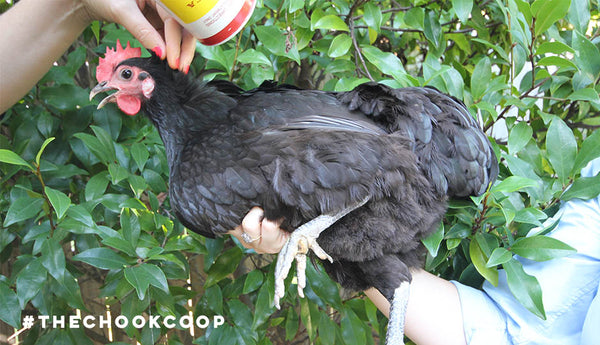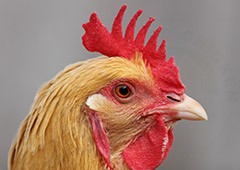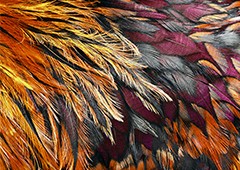Chickens have such dear, cute little heads- alert eyes and a sweet little beak. But if you’ve ever had the chance to get up close and personal with these magnificent creatures you will see there is quite a lot going on- much more than our standard eyes, nose and mouth!
So what exactly are all these bits and pieces, and what do they actually do? Read on for a quick course in chicken head anatomy, and never confuse your chickens facial features again!
Beak
The chicken beak is a bird’s version of a jaw, where some animals have jawbones and teeth to do the heavy lifting when it comes to using this body part, chickens have a more lightweight beak. The beak is made from keratin, and serves many purposes- grooming, eating, killing small prey, manipulating objects, probing for food, and feeding it’s young. While they are used for so much good, they’re also the weapon of choice when it comes to chickens pecking one another- a bad habit that should be broken. As the beak does continue to grow throughout a hens life, you may need to trim it to prevent the occurrence of damaging pecking. This is a very delicate procedure, so if you’re not feeling confident it may be best to have a vet or poultry specialist to perform a beak trim.
Nostril
Contrary to popular belief, chickens do in fact have nostrils and rely on it more than once believed. Chickens have two nostrils that are located on their beak and develop their sense of smell while they are still in their egg. While they may not be the best sniffers in the animal kingdom, it is still a strong sense!
Eyes
Chickens have such tiny eyes that it’s a wonder they can spot a leaping cricket for a snack so easily! Chickens in fact have great eyesight, and while it is not commonly known, they do see in colour, and yes they do have a 300 degree field of vision without turning their head! Chickens have the three basic colour cones: red, yellow and blue, as well as a UV cone- allowing them see many more shades and colours than us humans can. This UV cone is particularly handy when it comes scouring in the grass and dirt for bugs, seeds and other tasty morsels. This UV cone is also used by mother hens to determine the health of her little ones- growing feathers will reflect UV light, and so she can determine which of her chicks are growing well, and who she needs give a little extra TLC. They also have a motion-detecting cone in their eyes, which allows them to sense even the slightest of movements much more easily, and they can use each eye independently on different tasks simultaneously- puts our eyes to shame really! Chickens eyes are always quite alert, so if they are looking a little droopy, this can be a good indication of health issues, so you should perform a furthered health check to ensure your girls are happy and healthy.
Eye Ring
Because the eye is such a crucial part of a chickens anatomy, it requires some extra protection in the form of an eye ring. The eye ring is simply the skin surrounding each eye, and will cover the eyeball completely when they are closed- basically like an eyelid.
Ear
Unlike humans, our chicken friends do not have external ears. Rather, they are just an opening in the ear canal, located a little behind the eye, and are protected by a tuft of feathers. To hear and determine all the squawks and chicken chatter, your girls have quite sophisticated hearing, and will develop their sense of hearing before hatching-using it to communicate with their mother hen.
Ear Lobe
The ear lobe is the most prominent part of a chickens ear, and is the flap of skin found hanging just below the chickens ear canal. The earlobes will vary in colour and size depending on the chicken breed, but will be either white or red in colour. A fun fact about chickens ear lobes is that they can help determine what colour eggs your girl will lay. Red ear lobes means you will receive a bounty of brown or tinted eggs, whereas white earlobes means you can expect lots of lovely white eggs! (There are some exceptions, but this is the general rule).
Comb
Perhaps the most prominent feature on a chicken’s head is the comb. The comb is the fleshy growth found atop a chickens head, and is larger in roosters compared to hens. It will vary in shape and size depending on its variation and the chickens breed- to learn all about the different combs, this article will have you sorted! The chicken comb is most commonly red in colour, however you will find deep blue, purple, black and light grey combs on some chicken breeds. So what purpose do these protuberances serve? A chickens comb is first and foremost a cooling mechanism. As they cannot sweat to cool themselves, they are instead cooled by the blood flowing through their comb and wattles, which circulates and then returns to interior parts of their body cooled. Be wary though, as in winter the comb can be prone to frostbite, so lather it with petroleum jelly if you live in a cooler climate. This fascinating feature is also used by a rooster to attract female hens, as they are quite partial to the colour red- an easy way to woo the ladies indeed! The comb also serves as a very important indicator of a birds health- if it appears to be off colour, or is shrivelled or droopy in appearance, it is usually a sign of illness.
Wattles
A chickens wattle is the fleshy caruncle that is found dangling from their chin, usually found in a pair, however there are many variations which you can read up on here. Like the comb, the wattle is also most commonly red in colour, but will vary depending on the chickens breed. It is also an important cooling agent, acting to keep the bird cool in the same way the comb does.
So next time you’re having a cuddle with one of your chicks, take the time to check out their facial features and identify their intriguing anatomy!
Learning about chicken anatomy is a great start in identifying and preventing health issues for your chooks. Make sure that you've got the knowledge you need to raise a happy, healthy flock. Did you know 67% of chicken keepers surveyed experienced a chicken health or behaviour issue in the first 12 months that they didn’t know how to handle?
But don’t worry! Our feathered friends over at Chickenpedia have created a Chicken Healthcare Course. It is a extensive online course that covers everything you need, including what to look for in an unhealthy chicken and how to support your egg-laying hens to optimal health. All of their courses are really well structured and filled with vital knowledge, which is why I highly recommend them to all of my readers! From raising baby chicks to feeding to behavior, you’ll find valuable information that’ll give you the knowledge and confidence to successfully look after your chickens.
Check out Chickenpedia today. As a member, you will also get access to the ALL of their chicken courses!




















